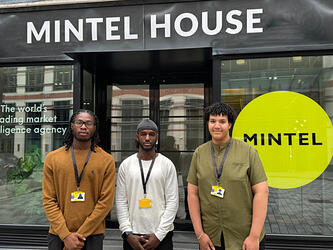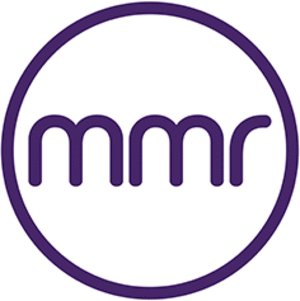Making design thinking your own
Within market research, design thinking is increasingly seen as a way of transforming insight into innovation. While there are commercial challenges involved in applying it to market research, the principles are relevant and valuable to researchers. But first, we must make it our own.
What is design thinking?
The Design Council developed the design thinking framework 15 years ago. The process has been adapted by many companies – depending on their own commercial reality – and typically has four stages:
- Discover: a broad insight generation process. Deliberately thinking as widely as possible and collecting as much information as possible around a chosen problem area
- Define: these insights then define a focused innovation challenge to be solved
- Develop: generate lots of ideas to solve the innovation challenge. This large quantity of ideas is then narrowed down to those which can best solve the challenge
- Deliver: the best ideas are turned into prototypes that are built, tested and refined until you’re happy it can solve your challenge.
Design thinking adds a simple, but effective structure to innovation. Consequently, it has gained popularity in sectors outside of design, including research.
How can design thinking and market research add value to one another?
Insight is fundamental to design thinking
Stage one uses primary and secondary research. Therefore, research launches the entire design thinking process. If done well, it’s the catalyst for successful innovation. Conversely, if done poorly, subsequent innovations fail – research quality effectively defines the ceiling for success.
They require similar skills
Methodological skills aside, researchers have several crossover skills valuable to design thinking: workshop facilitation with multiple stakeholder groups, insight-led storytelling and – critically – the commercial mindset needed to turn ideas into commercial value for clients.
Design (and designers) are already vital to research
Good design is central to progressive and impactful market research. Design allows for engaging communication with participants and convinces business decision-makers to action insights, delivering a return on insight investment. While not enough research agencies have in-house designers, the importance of design is undeniable.
Why aren’t they frequently used together already?
Organisational conflicts
Design thinking can elevate client-side researchers and research agencies’ role in business by transforming both from insight owners to solution providers. However, this poses a commissioning problem: who should own and fund a joint research/design thinking project – innovation or insight?
In larger businesses, established and hard-to-change innovation processes likely exist already. Even if insight clients see value in one agency owning both, convincing internal stakeholders (or existing innovation teams) is challenging.
Credibility issues
Most clients don’t question their research partner’s insight capabilities. However, they may question whether researchers can deliver the entire design thinking process (historically owned by innovation agencies), so research agencies wishing to offer it face a credibility challenge.
Perceived cost
Despite the framework’s simplicity, it is sometimes viewed as large and intimidating, which can deter those whose budgets are already spread thinly. However, innovation usually straddles multiple departments (insight, marketing, R&D). Therefore, a cross-funded approach can work to provide proof-of-concept.
So, how can we make design thinking work for clients?
These challenges may prevent research from owning the entire process. However, design thinking is, in part, effective because it collapses a long, complex process into four manageable, understandable stages. Research can, and should, own at least part of this process.
How much you consider applying design thinking depends on your access to design skills and the fit with your client’s internal innovation procedures.
There are four ways of applying design thinking you could explore to see the value of a combined approach:
- Use design thinking techniques to generate insight: design thinking uses many gamified techniques that encourage creative thinking, and these can be repurposed for creative insight generation approaches in focus groups or workshops
- From discover to define: stages one and two are the fundamentals of market research: research, analysis and workshopping. Research can potentially own this part of the process entirely as design input isn’t needed, but research outputs should be reframed from an insight to an innovation challenge
- From discover to develop: agencies with designers can go further in DT, developing potential solutions to innovation challenges via sketching ideas to bring them to life and turning ideas into testable digital prototypes
- From discover to deliver: the final stage is a build, test and refine process. Market research is perfectly placed to test, however, the building and refinement skills often need to be sourced externally.
Everyone in market research wants to increase their perceived value to businesses. Design thinking allows this by increasing insight’s involvement in innovation. At its best, research defines and leads marketing strategy. Design thinking gives research the chance to define and lead innovation, too – so pick an application, and make it your own.
Alex Holmes and Alex Wilman are research directors at Northstar Research

We hope you enjoyed this article.
Research Live is published by MRS.
The Market Research Society (MRS) exists to promote and protect the research sector, showcasing how research delivers impact for businesses and government.
Members of MRS enjoy many benefits including tailoured policy guidance, discounts on training and conferences, and access to member-only content.
For example, there's an archive of winning case studies from over a decade of MRS Awards.
Find out more about the benefits of joining MRS here.












0 Comments